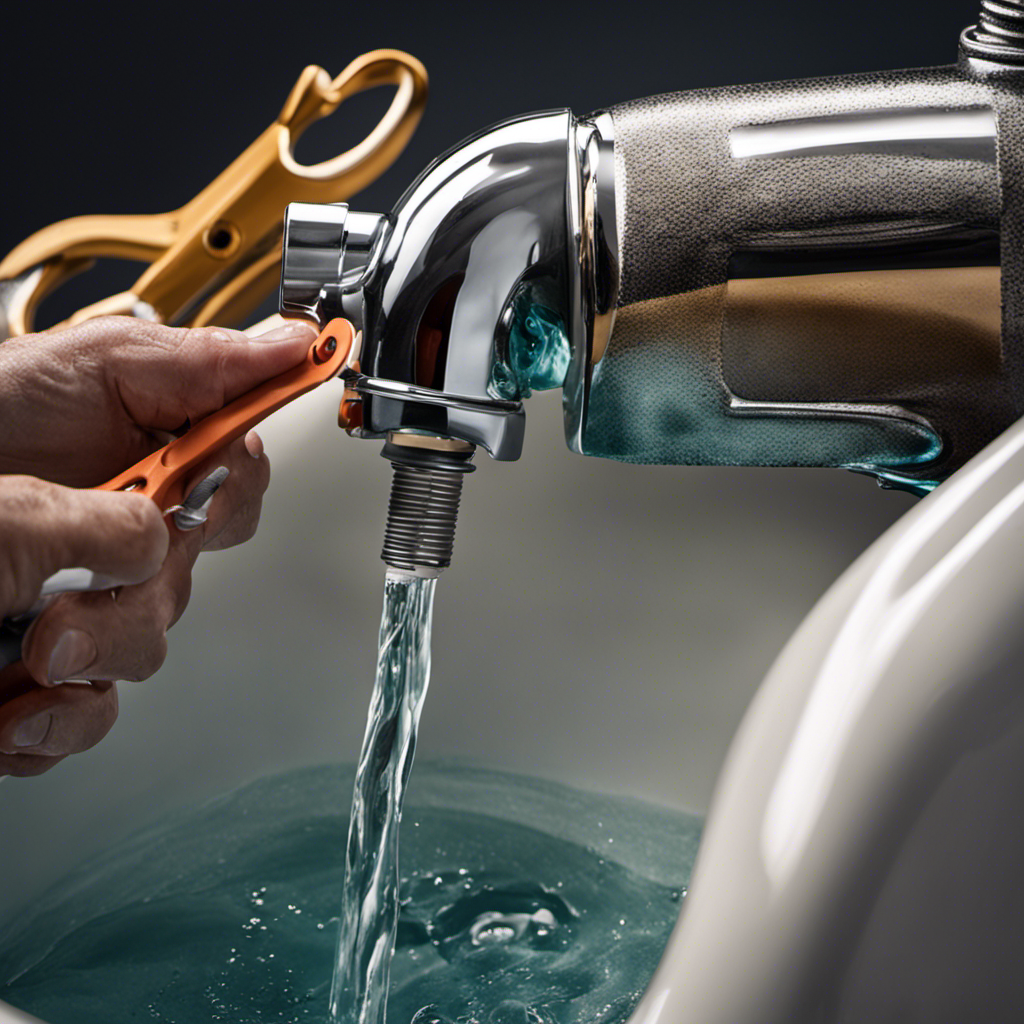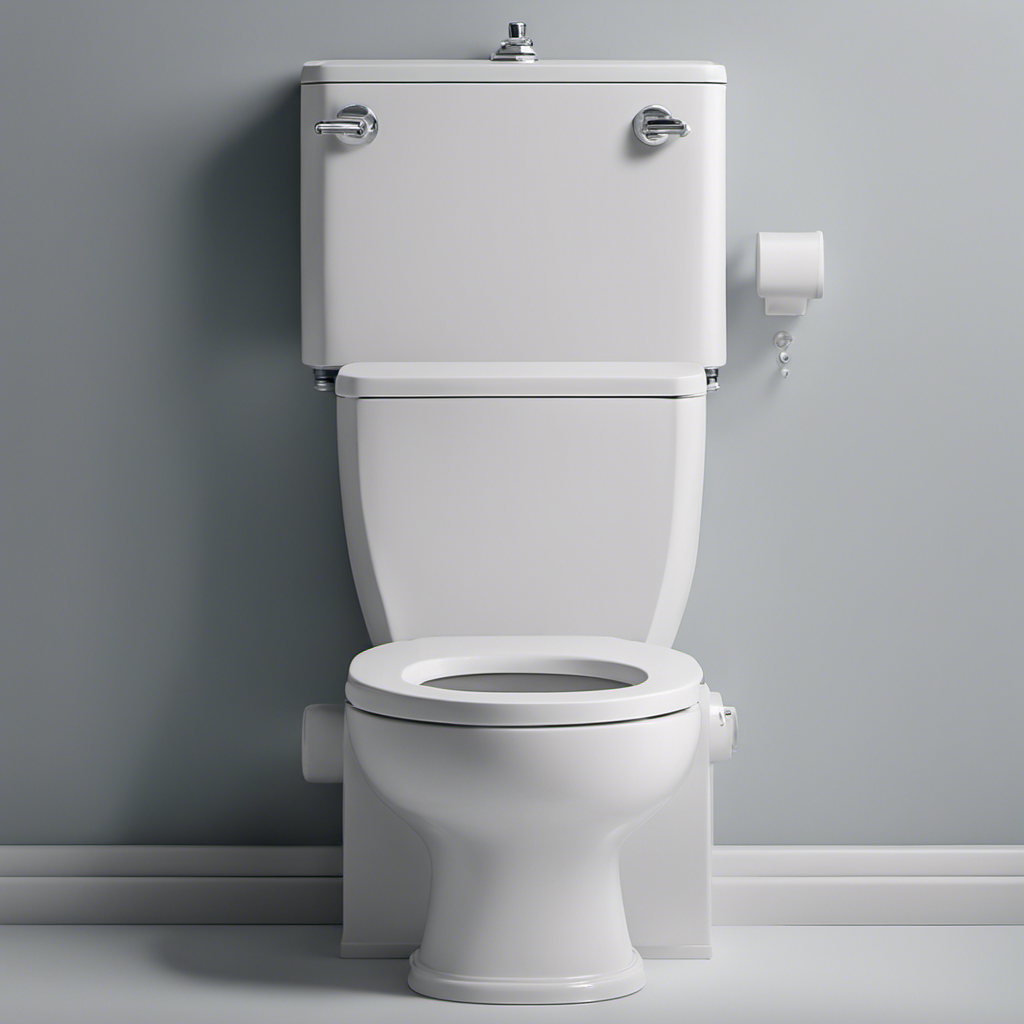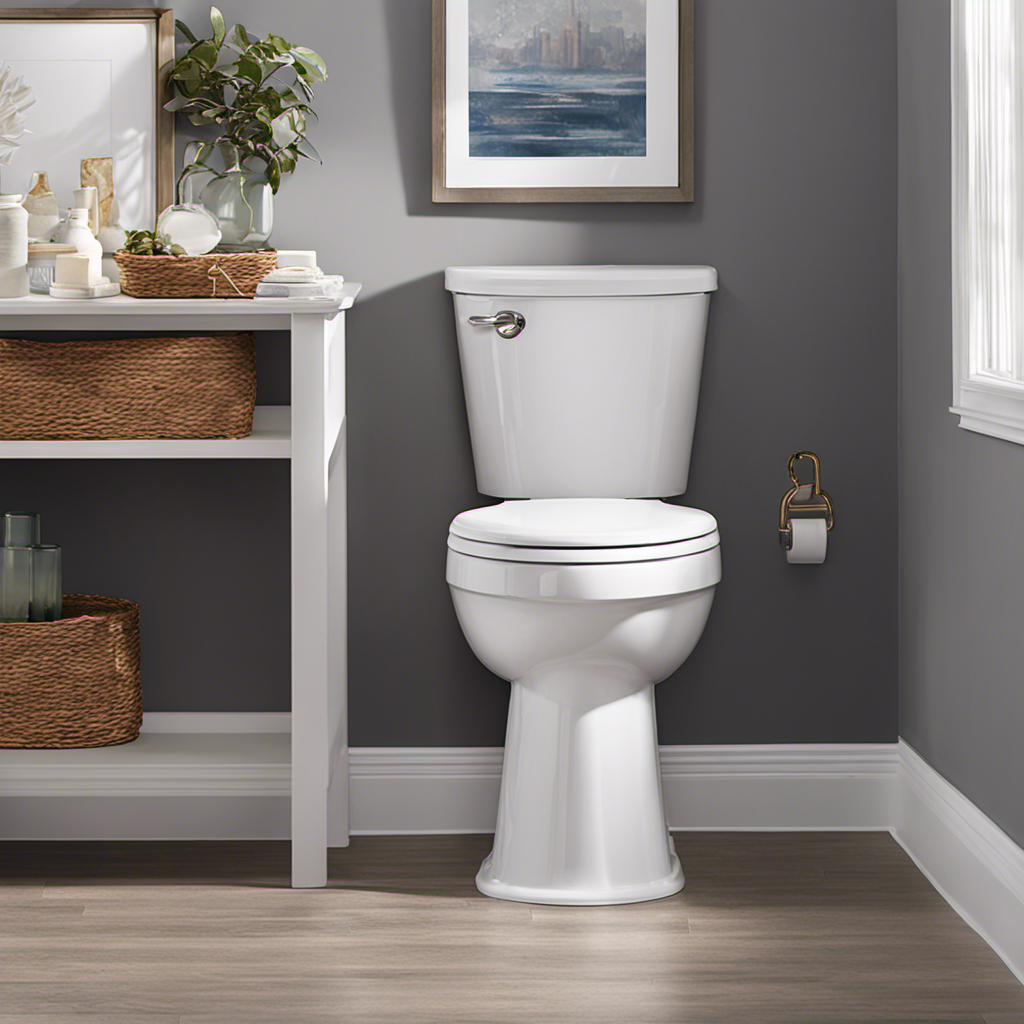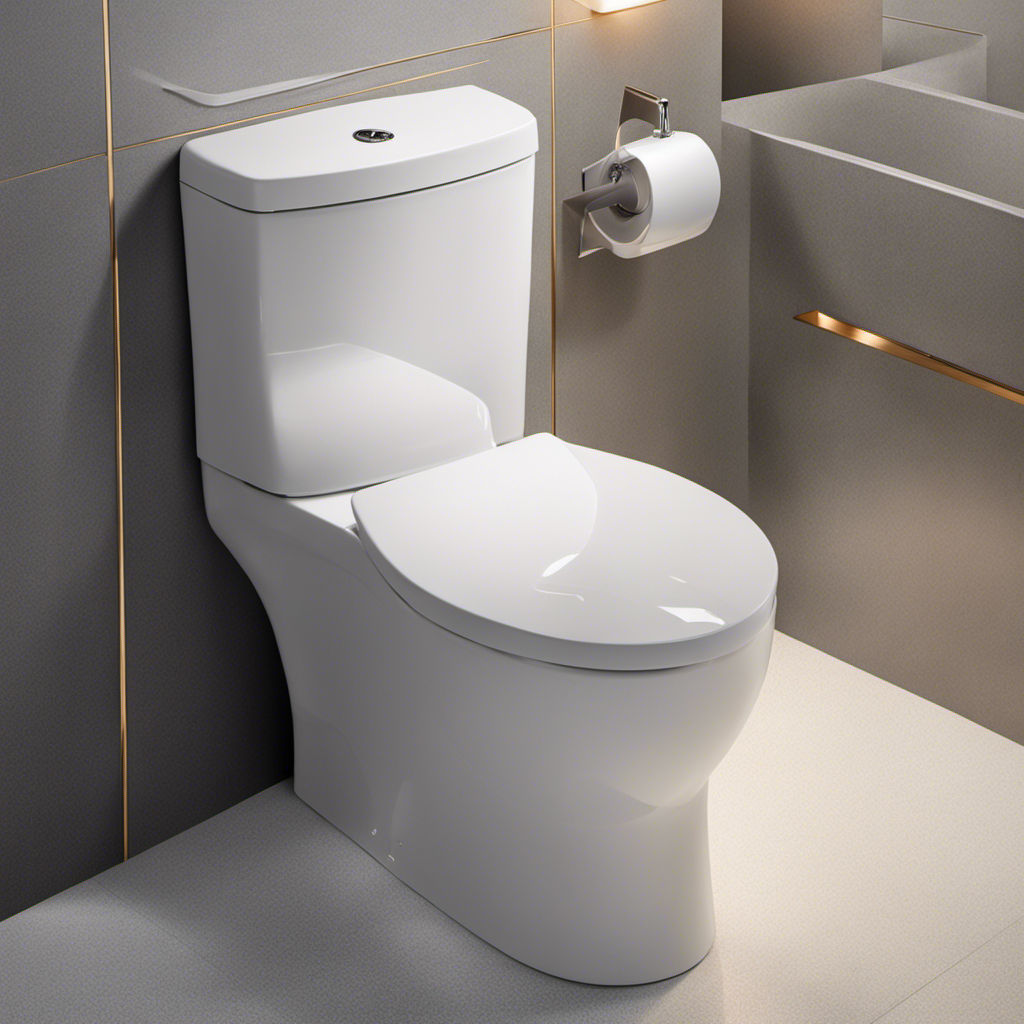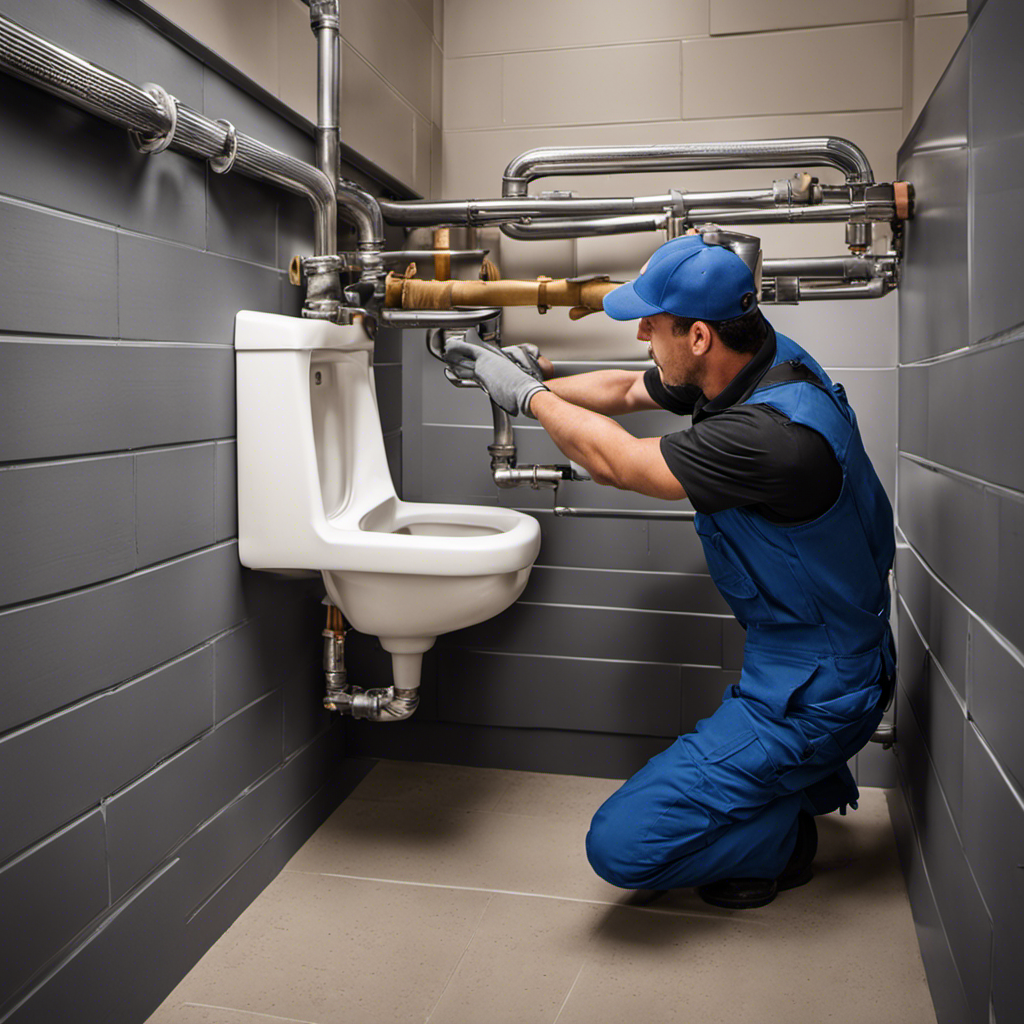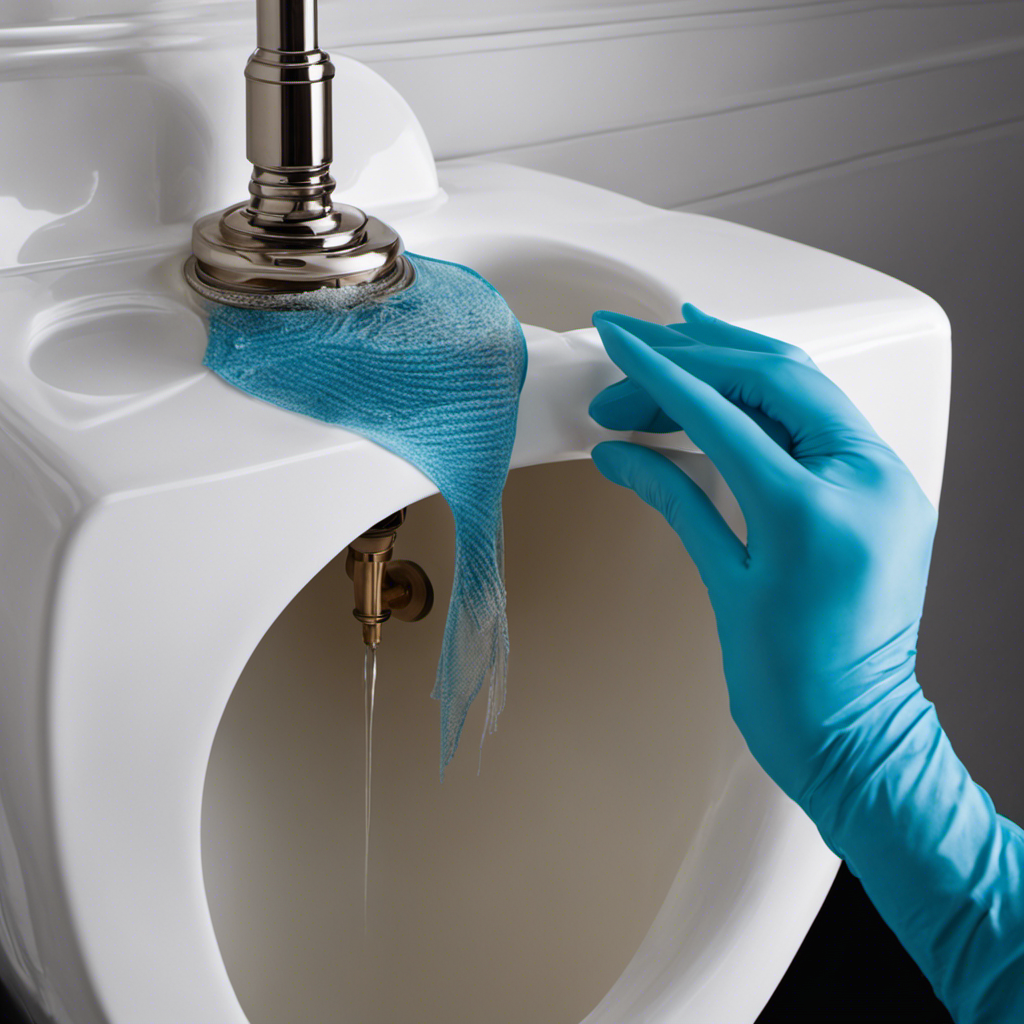I’ve been there before – standing in the bathroom, listening to the incessant sound of a toilet that just won’t stop running. It’s like a never-ending race, wasting water and driving me crazy.
But fear not, because in this article, I’m going to show you how to fix that stubborn toilet once and for all. With a few simple steps, we’ll identify the cause of the constant running, adjust the float and fill valve, inspect and clean the flapper valve, and troubleshoot any other possible issues.
Let’s get started!
Key Takeaways
- Common toilet problems range from a faulty flapper valve to a malfunctioning fill valve.
- Checking and adjusting the float and fill valve can help resolve the issue.
- Regularly inspect and clean the flapper valve to prevent common problems.
- If necessary, replace the flapper valve with a high-quality one that is compatible with your toilet model.
Identifying the Cause of the Constant Running
To fix a toilet that won’t stop running, it’s important to first identify the cause of the constant running. Common toilet problems can range from a faulty flapper valve to a malfunctioning fill valve. Troubleshooting toilet issues requires careful observation and a basic understanding of how the toilet works.
Start by removing the tank lid and inspecting the flapper valve. If it appears worn or damaged, it may need to be replaced. Additionally, check the water level in the tank and adjust the float if necessary. A float that is set too high can cause the toilet to continuously run.
Checking and Adjusting the Float and Fill Valve
Check if the float and fill valve need adjustment by ensuring they are properly positioned and functioning. The float is responsible for controlling the water level in the toilet tank, while the fill valve allows water to flow into the tank. If the water level is too high or too low, it may cause the toilet to run continuously. To adjust the water level, locate the float and adjust its position by bending the float arm. If this doesn’t solve the problem, it may be necessary to replace the fill valve. A fill valve replacement is a simple process that involves shutting off the water supply, removing the old valve, and installing a new one. By adjusting the water level or replacing the fill valve, you can fix a toilet that won’t stop running.
| Problem | Possible Cause | Solution |
|---|---|---|
| Constant running | Float not positioned correctly | Adjust float position |
| Constant running | Fill valve malfunctioning | Replace fill valve |
| Constant running | Water level too high or low | Adjust float position or replace fill valve |
Inspecting and Cleaning the Flapper Valve
Make sure you inspect and clean the flapper valve to ensure it is working properly.
The flapper valve is an essential part of your toilet’s flushing mechanism. Over time, it can develop common problems that can cause your toilet to run continuously. Some of the common flapper valve problems include wear and tear, mineral deposits, and misalignment.
By inspecting and cleaning the flapper valve regularly, you can prevent these issues from occurring. Start by turning off the water supply to the toilet and removing the tank lid. Check the flapper valve for any signs of damage, such as cracks or tears. If there are any mineral deposits, gently clean them using a soft brush or cloth.
Proper maintenance of flapper valves can extend their lifespan and keep your toilet running smoothly. However, if the flapper valve is damaged beyond repair, it is necessary to replace it.
Replacing the Flapper Valve if Necessary
If the flapper valve is damaged beyond repair, you’ll need to replace it with a new one. Here are four important things to consider when replacing the flapper valve:
-
Quality: Ensure that you purchase a high-quality flapper valve. Cheaper alternatives may not last as long and can lead to frequent repairs.
-
Compatibility: Check the specifications of your toilet to ensure that the flapper valve you purchase is compatible with your toilet model. This will prevent any issues during installation.
-
Installation: Follow the manufacturer’s instructions carefully when installing the new flapper valve. Improper installation can lead to leaks and further damage.
-
Expertise: While replacing a flapper valve is a relatively simple task, if you are unsure or uncomfortable doing it yourself, it is advisable to hire a professional plumber. They have the knowledge and experience to ensure the job is done correctly.
Troubleshooting Other Possible Issues
To troubleshoot other possible issues, start by examining the water level in the tank. If the water level is too low, it could be causing a weak flush or no flush at all. Simply adjust the fill valve to raise the water level to the appropriate mark. Another common issue is low water pressure, which can result in a weak flush. Check the water pressure in your home and ensure it meets the recommended range. Additionally, a leaky toilet handle can cause the tank to continuously run. To fix this, tighten the handle or replace it if necessary. Remember to turn off the water supply before making any repairs.
| Possible Issue | Troubleshooting Steps | Emotion Evoked |
|---|---|---|
| Low water level | Adjust fill valve to raise water level | Concern |
| Low water pressure | Check water pressure in home and adjust if necessary | Frustration |
| Leaky toilet handle | Tighten or replace handle | Annoyance |
Conclusion
In conclusion, fixing a constantly running toilet is a task that can easily be tackled with a little know-how. By identifying the cause of the problem and checking and adjusting the float and fill valve, you can put an end to the never-ending sound of running water.
Inspecting and cleaning the flapper valve is also crucial, and if necessary, replacing it will ensure a proper seal. Remember, troubleshooting other possible issues may be required, but with these steps, fixing a toilet that won’t stop running is as easy as pie.
